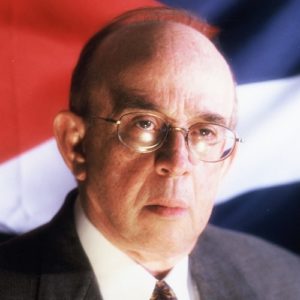Convinced that he could not win the presidential elections scheduled for June 1952, General Fulgencio Batista overthrew President Carlos Prío’s regime in a bloodless and masterfully executed coup d’état on March 10. The coup was almost entirely dependent on army backing and caught the Cuban population, as well as Prío and his followers, by surprise. Batista quickly consolidated his position by replacing dissenting army officers with his own loyal men, exiling, or arresting key Prío supporters, and taking control over the mass media. Prío himself sought asylum in the Mexican embassy and later left the country.
Batista justified his move by claiming that Prío intended to perpetuate his own rule and that the tendency toward violence evident in the country required the order or authority that only he could provide. Yet, other reasons perhaps better explain his actions. Batista was surrounded by a small and intimate group of ambitious and unscrupulous politicians who had been excluded from the political process by the two preceding Auténtico administrations. Batista himself longed for the power he once held and hoped his move would win him the popularity he always coveted but never achieved. His weak position as the elections approached, and the maneuverings of President Prío, who bribed a number of Batista’s allies into shifting their support thus minimizing his political possibilities, convinced the old general that the only road to power was through violence.
The ease with which Batista took over underscored the weakness of Cuba’s political institutions and the tendency toward violence that pervaded the political process. The legislative branch was weak and permeated by corruption. Even the judiciary had lost prestige because of its subservient role to the executive branch. The popular Ortodoxo party was leaderless and largely ineffectual since Eduardo Chibás, the popular party leader, committed suicide in 1951. The Auténticos’ corruption and inability to bring profound structural changes to the Cuban economy had cost them a good deal of support and discredited them in the eyes of many Cubans. The failure of this democratic reformist party was perhaps the single most important factor contributing to the 1952 coup and the events that followed.
The Cubans reacted skeptically to the new situation. Had it not been for the depressed status of the political life, as evidenced by the lack of respect for political figures, gangsterism, and graft that prevailed during the previous administrations, perhaps the Cubans would have reacted more vigorously. Batista’s performance in 1944, when he allowed free elections, and his promises now for honest and impartial elections in November 1953, contributed to the people’s acquiescence. The swiftness of the coup and the display of military power by Batista also did much to contain whatever outbursts of opposition that did occur. Interested in stability and economic development, business groups, both local and foreign, welcomed to a large extent a regime that would impose order.
The importance and power of the business community had grown significantly, helped in part by the rapid economic growth experienced by the island in the 1940s. World War II had paralyzed sugar production in many areas of Europe and Asia, making possible the further expansion of Cuba’s sugar industry. At the same time, the deterioration of international trade during the war years gave Cuba an extraordinary amount of foreign exchange that would otherwise have gone toward the purchase of agricultural and industrial import items. All of this served to accelerate the diversification process in Cuba’s economic development. Domestic production flourished, and other new productive activities were established. This circumstance was put to good use by Cuban entrepreneurs, who began to occupy relatively important positions in the development of the island’s economy.
Several other factors helped to accelerate Cuba’s economic growth in the postwar years. The moderate nationalistic policy in the international economic field, adopted during the administrations of Grau and Prío (1944-52). achieved important tariff concessions. Cuba’s commercial banking institutions expanded, and the credit facilities offered by these institutions permeated all private economic activities. After 1950, the year in which the National Bank of Cuba began to operate, Cuba counted, for the first time in its republican life, with an official and central bank. The official banking system was expanded a short time later with the establishment of the BANFAIC (Agricultural and Industrial Development Bank). With the assistance of the commercial banks, the system could now coordinate the credit needs required by the pace of economic development of the non-sugar productive sectors.
In the postwar years national entrepreneurs intensified the process of “Cubanizing” the sugar industry, which had begun in the 1930s. In 1939 Cuban capital owned 54 sugar mills, which produced 22 percent of the total sugar production of the island. In 1952 there were 113 Cuban-owned sugar mills, which accounted for 55 percent of the total sugar production, excluding those sugar mills operated by foreign sugar companies in which Cuban capital participated to the point that in many cases Cubans owned the majority of the capital stock issued. Cuban entrepreneurs, who had become an important factor in the commercial, sugar, and financial sectors, demonstrated great ability in developing new production, and in taking advantage of the combination of favorable circumstances.
Batista encouraged the growth of Cuban capital and his return to power stimulated foreign investment. The mining sector, helped by sizable investments of U.S. capital, expanded its production of nickel, cobalt, and other minerals. The government helped develop new tourist centers and the tourist industry became one of the island’s most important sources of revenue. Public works projects neglected or left incomplete by the Grau and Prío administrations, were financed and completed with the concomitant graft. Low-cost housing was made available through government credits, and a badly needed water system was built for Havana. The cattle industry expanded to the point where it ranked high compared to the rest of Latin America.
Yet despite this process, the Cuban economy suffered from certain structural weaknesses which prevented any sustained period of rapid economic growth. Chief among these was an excessive concentration on sugar production and foreign trade; a critical dependency on one mayor buyer-supplier; substantial unemployment and underemployment; and inequalities between urban and rural living standards.
Closely tied to its role of sugar supplier was Cuba’s excessive dependence on the United States for trade relations. The advantageous position of Cuban sugar in the United States was bought with fairly sizable Cuban tariff concessions which limited the growth of domestic industry and favored imports of U.S. manufactured goods. In the 1950s about 75 percent of Cuban imports came from the northern neighbor, while some 65 percent of Cuban exports found their way to U.S. markets. Most investment funds came also from U.S. financial centers, although domestic banking showed remarkable growth after the creation of the National Bank.
Unemployment and underemployment were widespread. A 1956-1957 study found that about 17 percent of the labor force was unemployed with another 13 percent classified as underemployed. Even during the sugar harvest months some 200,000 persons were without jobs, and this figure jumped to 457,000 during the “dead season.” The high proportion of workers engaged in service occupations (36 percent in 1957) was a clear indication of vast underemployment.
Living conditions differed greatly between urban and rural areas. Outside major urban centers, livable housing and educational and health services were scarce and of poor quality. For example, the rural illiteracy rate was almost four times that of the urban area.
Most new housing in the 1950s consisted of multiple dwelling units and suburban residences in and around Havana. At the same time rural immigrants poured into make-shift neighborhoods occupying any vacant urban land. With few employment opportunities available, these neighborhoods became centers of indigency, crime, or, at best, underemployment.
Despite these weaknesses, the economic progress of the mid-1950s and the elimination of the gang violence so prevalent during the Auténtico administrations gained for Batista the support of the business sectors not intimately linked with the opposition groups. Batista also moved to gain labor and peasant support. He continued the pro-labor policies initiated by the preceding administrations, and through bribery, flattery, and intimidation, won the support of key labor leaders. Controlled by Eusebio Mujal, Cuba’s labor czar, the Cuban Confederation of Labor cooperated as an independent ally of the regime, but with Mujal retaining an autonomous hold on the confederation. Batista also introduced numerous decrees extending to small tenant farmers the right of permanency already enjoyed by sugar-growing tenant planters and expanding his base of support in the rural areas.
Despite the apparent support of business, labor, and peasant groups, however, Batista failed to develop an active base of political backing. His illegal administration and Batista’s failure to achieve popularity eroded his policies. Political loyalties were often the result of intimidation or expediency and for that reason were often short-lived in Cuba. Batista’s actual political base was now narrower than in the 1930s. Even within the armed forces, and particularly in the middle and lower echelons of the officers’ corps, there were numerous disgruntled Ortodoxo and Auténtico officers who engaged in conspiratorial activities against the regime.
The establishment of the Batista dictatorship had a profound impact on the content and tone of literature. Writers decried the moral decomposition of the republic and even questioned the ability of the Cubans to govern themselves., Although themes like nationalism, reformism, and anti-Americanism were still present in the literature after 1952, they were now impregnated with pessimism and sadness over the future and over the retrogression that the return of a military dictatorship meant for Cuba’s political development. Writers pointed out that there was a feeling of general guilt over the Cubans’ inability to live up to the founding fathers. They insisted that the Cubans rejected their individual responsibilities by claiming that society as a whole was not fulfilling its collective responsibilities and came to believe that they never deserved men like Martí, Maceo, or Gómez.
The idolization of Martí grew even stronger after 1952. Two events, the half-century commemoration of the birth of the republic in 1952 and the one-hundredth celebration of Martí’s birth in 1953, gave rise to a literature attempting to assess the development and status of Cuba at such significant junctures. A variety of books and articles appeared on Martí’s life and on the epic struggle for Cuba’s independence. In them, and especially in numerous speeches, Martí’s teachings were contrasted with the conditions in which the dictatorship had submerged Cuba. Old revolutionaries, idealistic youngsters, intellectuals, journalists, and crooked politicians as well, invoked Martí. They all seemed to find shelter and comfort by repeating his words and bathing in the baptismal stream of his thought.
Writings and speeches soon gave way to violence, however. The imposition of strict censorship by the Batista regime silenced all criticism. Opposition leaders were either jailed or exiled. Repression increased. The voices that clamored for a peaceful solution to the interruption of Cuba’s constitutional process were soon drowned by voices clamoring for violence. Cuba again was submerged in protests, terrorism and violence, a violence that finally culminated in a major revolution.









1 comentario en “Background to Revolution: The Batista Dictatorship and the Decline of Democracy in Cuba”
You mean Carlos Prio who actually was responsible for bringing Fidel Castro back to Cuba. Under Batista Cuba had the 3rd highest per capita income. Anyone with brains new Fidel was a communist very similar to today «they just couldnt swallow Batista» so you allowed a Tiger in your midst and opened the door to 60 years. Screw your narrative
Los comentarios están cerrados.